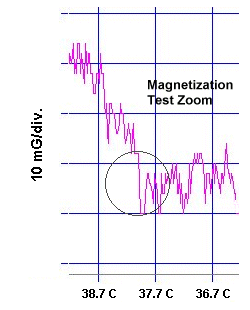



Superconductors.ORG herein reports the 35 C superconductor announced in January 2013 has been successfully reformulated to advance high Tc to near 38 Celsius (100F, 311K). This was accomplished by changing the structure from a D223 to a D212 to increase the planar weight ratio along the C axis (see graphic below left). The chemical formula thus becomes Tl5Pb2Ba2SiCu8O16+. This is the fourth material found to have a critical transition temperature (Tc) above room temperature.
A number of magnetization tests were performed on the test pellet to confirm this extraordinary transition temperature.1 In the above photo the sintered pellet can be seen alongside the magnetometer.
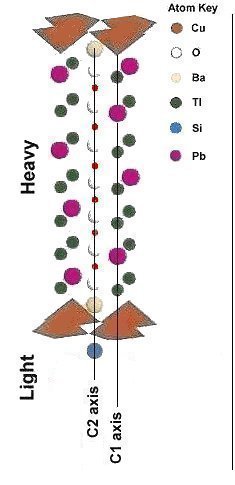
|
Below is the magnetization plot at page top
expanded to show a second Meissner transition resulting from another structure type.
The (majority phase) D212 structure has a higher Tc than the (minority phase) D223 due to its greater PWR.
The D212 is the latest discovery. The D223 is the structure of the material found in January.
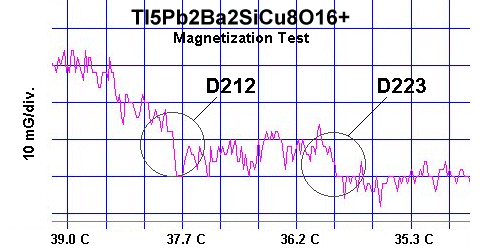
Below are two additional magnetization plots showing a similar 10 milli-Gauss Meissner transition near 38 Celsius. The flashing lines represent the average of the noise component, skewing apart at Tc. The signal is noisy because of the small volume fraction of superconductive material within the bulk. |
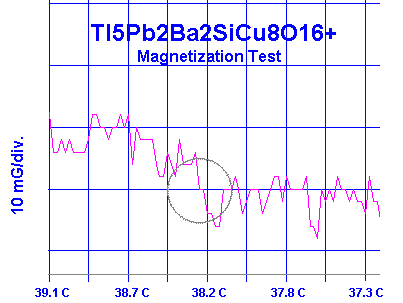
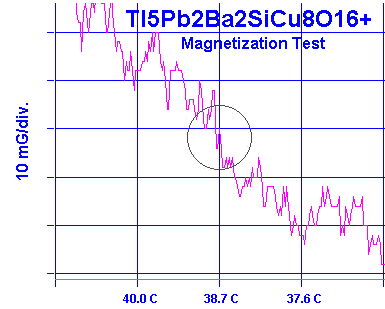
Tl5Pb2Ba2SiCu8O16+ was prepared using the layer cake method, as shown below. The pellet had over 100 interference layers. And, even using this layering technique, the volume fraction is low, requiring very sensitive test equipment.
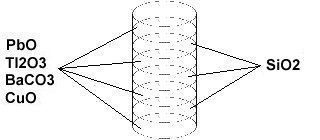
The below stoichiometric ratios were used for the ODD layers:
Tl2O3 99.99% (Alfa Aesar) 7.366 grains...and the below ratios for the EVEN layers.
SiO2 99.996% (GE 214) 5 grains (non-critical)The chemical precursors were pelletized at 70,000 PSI and sintered for 35 hours at 865C. The pellet was then annealed for 9+ hours at 500C in flowing O2. Temperature was determined using an Omega type "T" thermocouple and precision OP77 DC amplifier. The magnetometer employed twin Honeywell SS94A1F Hall-effect sensors with a tandem sensitivity of 50 mv/Gauss.
RESEARCH NOTE: The copper-oxides are strongly hygroscopic. All tests should be performed immediately after annealing.
RE-PUBLICATION NOTICE: Elsevier Publishing, dba Elsevier Science, as well as Morris Communications, both print and broadcast divisions, are specifically prohibited from re-publishing any part of this news story.
E. Joe Eck
© 2013 Superconductors.ORG
All rights reserved.
1. Testing temperatures are believed accurate within +/- 0.50 degrees C.
 BACK to "News" page at Superconductors.ORG
BACK to "News" page at Superconductors.ORG